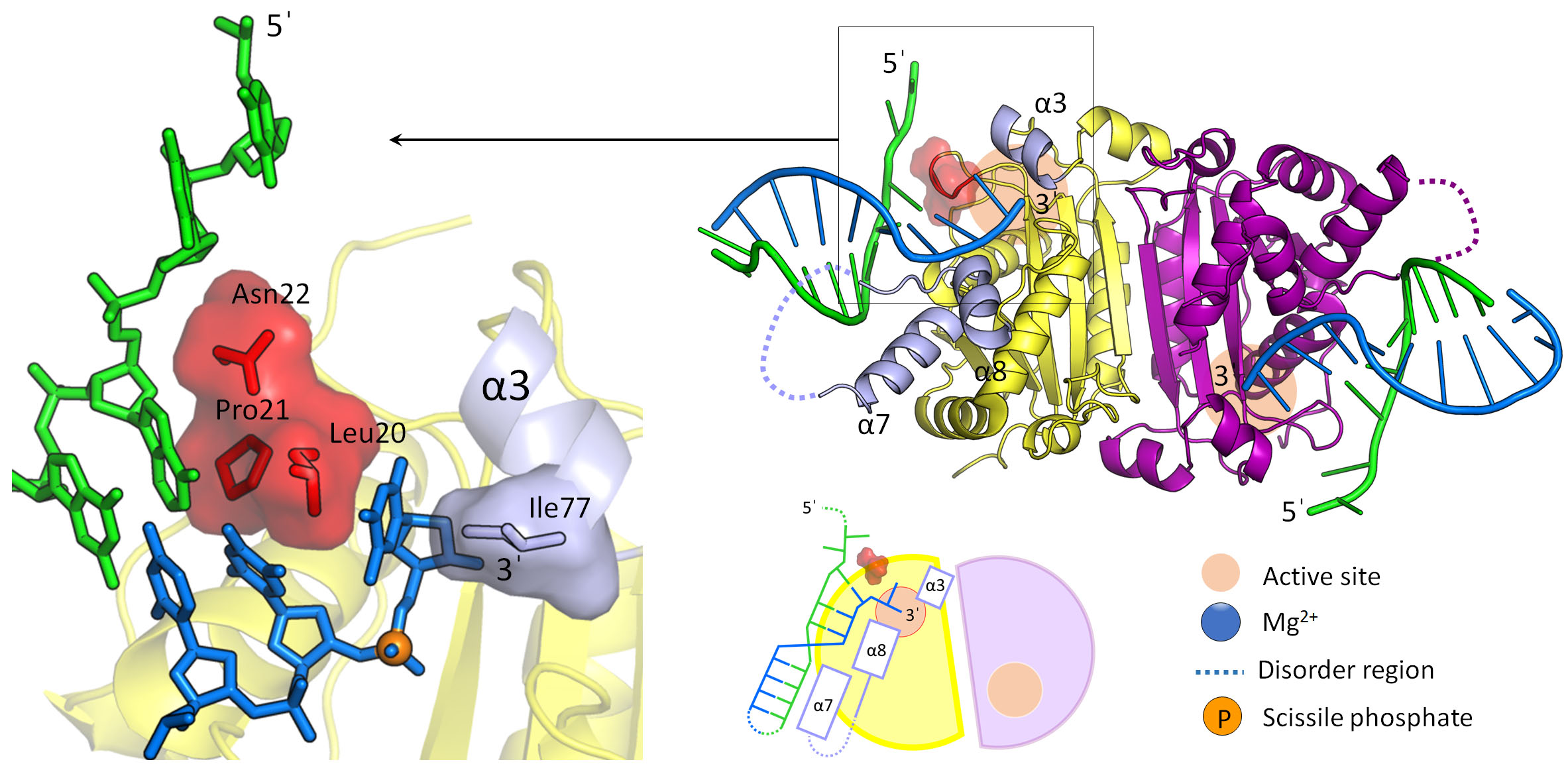和研究有關的事情
Research Highlights

We are a structural biology research group and determine bio-macromolecule structures by X-ray crystallography, SAXS, or Cryo-EM. We aim to reveal the biological functions and working mechanisms of nucleic acid-binding proteins or multi-protein complexes involved in genome integrity maintenance and nucleic acid-mediated immune response. Also, our study can be used to understand the causes of genetic diseases and be applied in structure-based drug design.
The DEDDh exonuclease family (also named DnaQ-family of exonucleases) is one of our research targets, which constitutes thousands of members that play essential roles in RNA or DNA processing in prokaryotes and eukaryotes. All of the DEDDh exonucleases bear a conserved two-metal ion contained active site but diversified substrate binding site. The distinctive cellular functions and substrate preference of most DEDDh exonucleases can be linked to their specific substrate binding sites and need further studies.
TREX1 and TREX2 are two DEDDh exonucleases of mammalian cells and are associated with nucleic acid-mediated immune responses. TREX1 is a cytosolic exonuclease responsible for degrading endogenous ssDNA, dsDNA, or RNA-DNA hybrid generated from DNA replication and endogenous retrovirus. Mutations in the gene encoding TREX1 are associated with many autoimmune diseases, such as Aicardi-Goutières syndrome (AGS) and Systemic Lupus Erythematosus (SLE). TREX2 is participating in various genomic integrity-maintaining pathways. Dysfunctional TREX2 leads to spontaneously broken chromosomes, reduced cell proliferation, and susceptibility to drug- or UV-induced skin carcinogenesis, highlighting the role of TREX2 in DNA replication and the importance of tumor suppression. In addition, overexpression of TREX2 in skin cells leads to the development of psoriasis phenotype by altering the apoptosis and influencing skin immune responses. Therefore, inhibitors or drugs that target TREX2 pathways may be useful in treating psoriasis. We are interested in the molecular mechanisms of TREX1 and TREX2 in various nucleic acid processing pathways and want to reveal the linkage between mutations and diseases. How TREX1 and TREX2 work with interacting partners in the nucleic acid metabolism pathways is the other question we want to address.
Interestingly, some of the DEDDh exonucleases are essential for viral infection and replication, including Nsp14 of SARS Coronavirus, NP exonuclease of Lassa fever virus, and human TREX1 that is hijacked by HIV to digest nonproductive viral transcripts. These DEDDh exonucleases are the poetical target for anti-viral therapy. Therefore, we aimed to discover the inhibitors of viral DEDDh exonucleases by structure-based drug discovery and applied these inhibitors in anti-viral therapy.